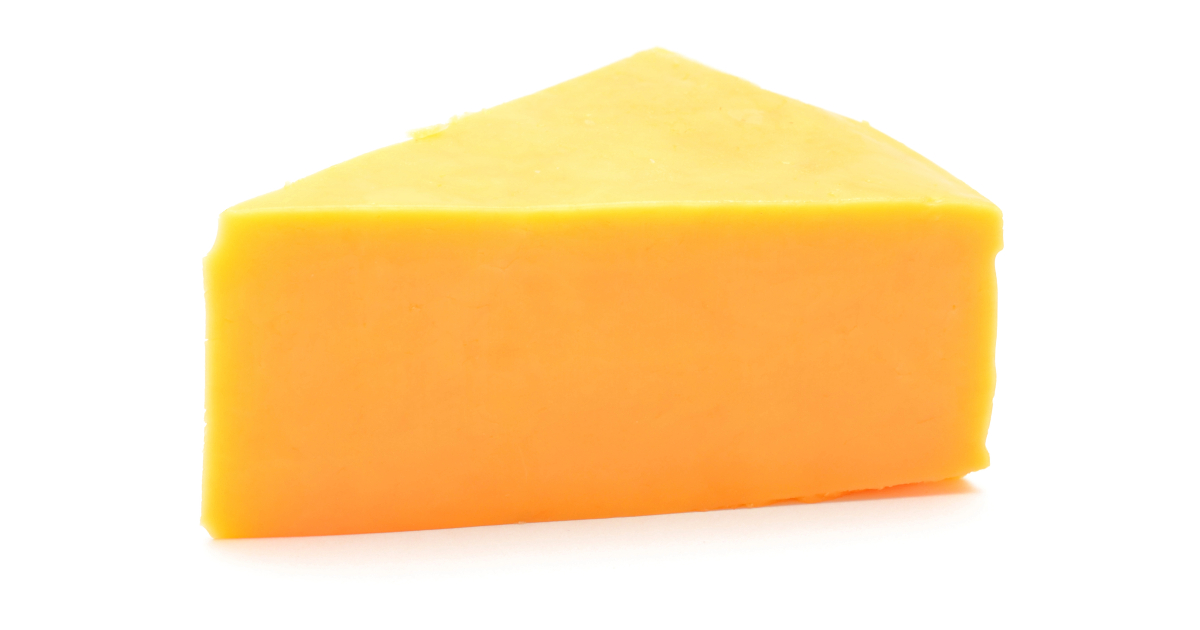Cheddar and American cheese are two of the most popular cheese varieties found in kitchens across America.

At first glance, they may seem quite similar - both have a familiar yellow-orange hue when melted.
However, when it comes to flavor, texture, uses, and even nutritional value, cheddar and American cheese differ significantly.
A Brief History of Cheddar and American Cheese
To understand what sets these two cheeses apart, it helps to first look at their origins.
Cheddar cheese has a long and storied history spanning back to medieval times. This iconic cheese originated in the village of Cheddar in England's Somerset region, where cheesemaking techniques were honed over generations. Over time, cheddar gained immense popularity and spread across Britain before becoming an international sensation.
American cheese doesn't have the same deep-rooted tradition. As its name suggests, this cheese was invented right here in the United States during the early 20th century. Fueled by large-scale dairy production, manufacturers sought to create an affordable, convenient cheese product that could withstand mass production and distribution.
So while cheddar cheese is crafted using time-honored techniques, American cheese is very much a product of modern food manufacturing processes. This difference is evident throughout nearly every aspect of these two cheeses.
How Cheddar and American Cheese Are Made
The creation process itself showcases the diverging approaches to making cheddar and American cheese.
Cheddar cheese begins life like most "real" cheeses - with raw milk from cows. The milk is treated with rennet, causing curds to separate from the whey. These curds are then cut up, stacked, flipped, and pressed together to expel more whey. What remains is formed into blocks and aged in carefully controlled environments, anywhere from 2 months to over 1 year. This is where cheddar gets its signature tangy, complex flavors and crumbly textures.
American cheese, on the other hand, starts with a blend of cheeses (typically cheddar, Colby, and others), whey, milk proteins and additional emulsifiers and preservatives. This mixture is melted together into a homogeneous liquid with a very high temperature. It is then poured into molds and cooled to form the final product, which gets packaged into slices or blocks. The high heat denatures proteins to create that smooth, almost plastic-like texture American cheese is known for.
So traditional cheddar cheese relies entirely on the quality of milk and aging processes, while modern food technology enables mass production of American cheese.
Flavor and Texture
When it comes to flavors and textures, cheddar and American cheese couldn’t be more different.
Cheddar has a widely variable flavor profile, ranging from mild to extra sharp. Milder cheddar offers a creamy, buttery taste. More aged varieties deliver a stronger, tangier punch of flavor, with occasional crunchy bits called “cheese crystals” forming. The texture also shifts with extensive aging, going from semi-soft and crumbly to hard and flaky.
American cheese, as a highly processed product, has a much more uniform and delicate flavor. It tends to taste mildly salty, tangy, and dairy-like - almost the neutral concept of what “cheese” flavor means to many people. The texture is equally uniform - consistently soft, smooth, and slick regardless of brand. Some perceive its texture closer to plastic than a natural dairy food.
So in essence: cheddar cheese flaunts its complex flavors and crumbly body, while American cheese embraces simplistic mildness and a melt-in-your-mouth creaminess.
Melting Abilities
Another area where these cheeses differ considerably is in their melting properties. This is a key distinction for cooking applications.
Lean, smooth American cheese melts rapidly, evenly, and consistently without separating or turning greasy. This makes it a popular choice when gooey melted cheese is desired, like on burgers and grilled cheese sandwiches. Added emulsifiers prevent the proteins and fats from breaking down too quickly when heated.
Being a natural cheese, cheddar doesn’t melt in quite the same way. It requires higher temperatures to melt smoothly. Even when melted, it still retains a bit more structure rather than completely dissolving into liquid. Fat may separate out when overheated as well, making melted cheddar somewhat oily. For applications like cheese sauces, a roux or sodium citrate helps cheddar melt into a rich, creamy liquid.
So American cheese is your best bet for getting those picture-perfect, drippy cheese pulls, while cheddar may shine more in baked dishes where its sharpened flavor concentration stands out.
Common Uses in Cooking
Due to its mild flavor and superior melting abilities, American cheese tends to dominate applications like:
- Grilled cheese sandwiches
- Burgers
- Quesadillas
- Cheese sauces
- Macaroni and cheese
- Cheese dips
Where a smooth, consistent melt is desired, American cheese delivers. Its mild, inoffensive flavor also works well in simple preparations where cheese plays a supporting role.
The more robust, complex flavor of cheddar cheese opens it up for uses like:
- Snacking on its own
- Sandwiches, burgers, omelets, etc.
- Shredding/grating into salads, tacos, pasta dishes
- Baking into breads, scones, etc.
- Pairing with fruit, wine, crackers, etc.
Cheddar’s sharper notes allow it to be the star player in recipes rather than just a melty supporting act. Its firm yet crumbly texture also gives more dimension of flavor compared to the one-note creaminess of processed American cheese.
Nutrition and Health Factors
With American cheese being highly processed and cheddar being a natural cheese, there are some nutritional differences as well.
Cheddar cheese made from whole milk contains a good amount of protein (25g per 100g) along with calcium and other vitamins and minerals. However, it is high in saturated fat (21g per 100g) and sodium, so enjoying cheddar in moderation is important.
American cheese, being blended with emulsifiers and whey proteins, is actually higher in some nutrients but not as nutrient-dense overall:
- Higher in calcium and vitamin A
- Lower in fat and sodium
- Much less protein (only 19g per 100g)
- Also high in sodium but contains additives found in processed foods
So purely looking at nutritional content, cheddar cheese is often regarded as the healthier choice over the more heavily processed American cheese. Of course, incorporating both types in moderation as part of an overall balanced diet is perfectly fine for most people. Those restricting sodium or additives may want to limit intake of American cheese though.
Key Takeaway: Cheddar cheese has a more favorable nutritional profile thanks to its natural ingredients, but is still high in saturated fat and sodium. American cheese is more processed but lower in fat - though in moderation, both can have a place in one's diet.
Price Differences and Shelf Life
The last areas where cheddar and American cheese differ are cost and how long they keep fresh.
Cheddar cheese is more expensive pound for pound than American cheese. Reasons driving this price premium include:
- Made from higher milkfat content whole milk (more expensive ingredient)
- Loss of moisture during aging = less final product yield
- Extended aging time requires resources and space
- More complex flavor commands higher value
With American cheese being made for mass production, manufacturers utilize low-cost ingredients and efficient processes to create a very affordable product. The vacuum sealing and long shelf life allow for centralized production and distribution to consumers across the country.
That extended shelf life is the other major difference, with American cheese lasting easily 1-2 months unopened and cheddar cheese keeping its quality for 2-3 weeks after opening. So American cheese holds up better over time after production.
FAQs
Is deli American cheese real cheese?
Deli-style American cheese sliced fresh in the deli department may say it contains "real cheese" and be firmer in texture than the pre-packed singles. However, these too are processed cheese products made with emulsifiers, extra ingredients, and not just pure milk. So they still lack the true authenticity of a natural cheese.
What's the difference between white and yellow American cheese?
The main difference between white American cheese and regular yellow American cheese comes down to food coloring. Annatto seed powder gives many cheeses that classic golden hue. So white American uses less or no coloring agents, but otherwise has a similar mild flavor.
Is cheddar cheese healthy?
Yes, when enjoyed in moderation, natural cheeses like cheddar offer some nutritional benefits thanks to nutrients like protein, calcium, vitamins A and B12. Just be mindful of your saturated fat and sodium consumption from cheddar cheese.
What is the healthiest cheddar cheese?
For maximum nutrition and health, choose an organic grass-fed cheddar cheese whenever possible. This ensures higher omega-3 content and more antioxidants than cheese from conventionally-raised cows. Goat milk cheddar can also be an alternative for better digestibility.
How long does opened cheddar cheese last in the fridge?
Once opened, cheddar cheese stays fresh for 3-4 weeks when properly stored in the refrigerator. Make sure to rewrap it tightly in packaging or plastic wrap, and don't let it absorb odors from other foods. Mold development is a sign it should no longer be consumed.
Conclusion
Cheddar and American cheese have remarkably different flavors and characteristics - from origins and manufacturing processes, uses in the kitchen and nutrition.
Traditional cheddar highlights craftsmanship passed down through generations to deliver complex tangy flavors and crumbly textures.
American cheese trades rich heritage for convenience and practicality - delivering affordable, melty goodness from the modern dairy industry's efficient procedures.

